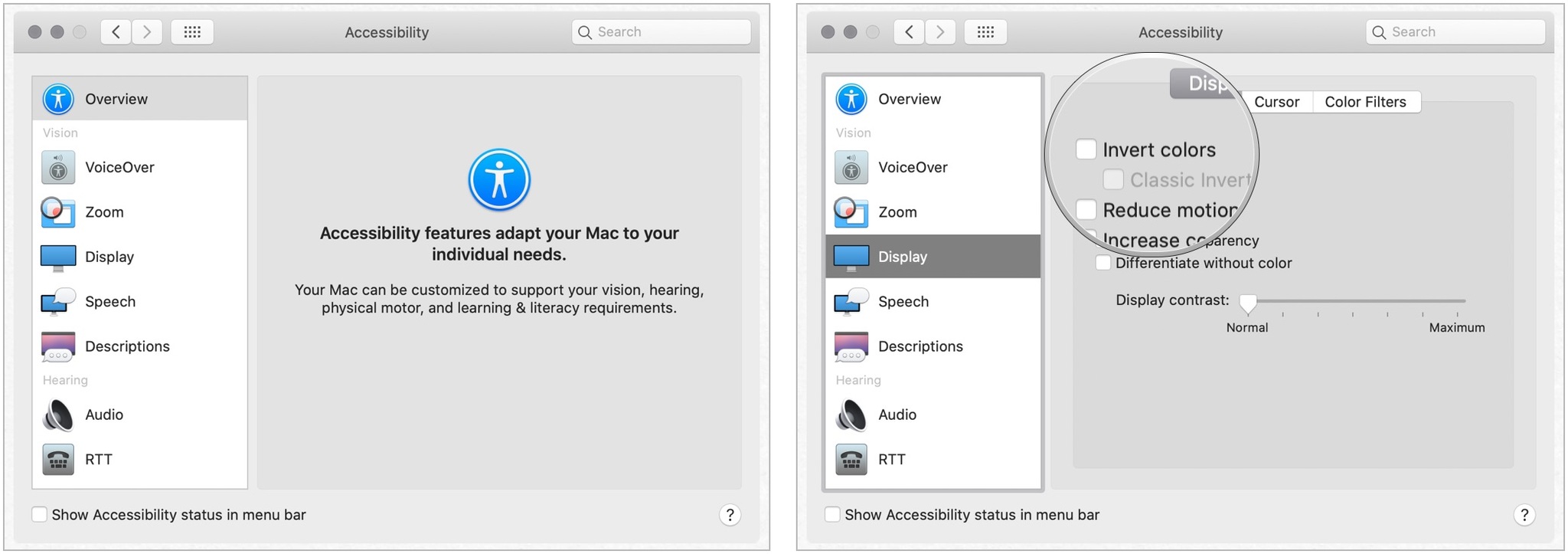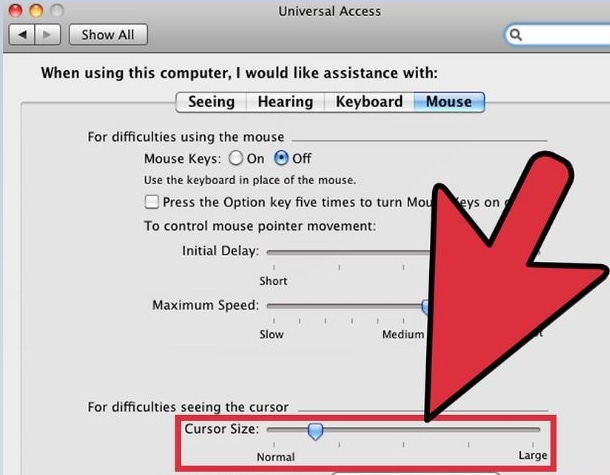- Change Your Mouse Cursor Mac
- How To Change Your Mouse Cursor Color On Mac
- Change Mouse Cursor Color Mac
- Change Cursor Color On Mac

Many of us can’t use the computer without having a mouse. However, using the mouse with the default settings may not work well for all users. For example, the default mouse pointer size is not sufficient for those people with vision problems. This will lead to eye strain, especially when trying to locate the cursor in white background Word documents. Fortunately, both Windows and Mac operating systems allows you to change mouse pointer size.
Related:How to locate mouse pointer quickly in Windows?
If you look at Mac or Windows, you’ll notice that they have a white cursor for pointing. Chrome OS is the only operating system that uses a black cursor in an effort to increase its visibility. This site contains user submitted content, comments and opinions and is for informational purposes only. Apple may provide or recommend responses as a possible solution based on the information provided; every potential issue may involve several factors not detailed in the conversations captured in an electronic forum and Apple can therefore provide no guarantee as to the.
Change Mouse Pointer Size in Windows
Login to your Windows computer and press “Win Logo + I shortcut keys. This will open Windows Settings app. Alternatively, you can go to Start menu and click on the gear settings icon to open Windows Settings app. The app will look like below having multiple sections. click on “Ease of Access” to open accessibility settings page.
Go to “Cursor & pointer size” section to change the size of cursor and mouse pointer.
Below are the options you can customize:
- Change cursor thickness – drag the bar to increase the thickness of the cursor. This will be useful, if you are struggling to locate the cursor in documents.
- Change pointer size – Windows offers three sizes to choose for your pointer. By default smaller size is used and you can choose medium or larger size based on your need.
- Change pointer color – If you notice, Windows by default show the mouse pointer in white color and cursor in black color. Sometimes, this can cause trouble in locating and you can invert the color of the pointer/cursor to improve the visibility. In addition, you can also make the pointer / cursor transparent, so that it will not hide the content behind.
If these options are not enough for your need, you may need to find a third-party app to customize further.
Related:10 tips to use your mouse productively.
Change Mouse Pointer Size in macOS
Similar to Windows computers, you can also change the mouse pointer for better accessibility in Mac. After logging into your Mac, press “Command + ,” shortcut keys. Alternatively, go to “Apple Menu > System Preferences…” to open settings panel.
When you are in “System Preferences” panel, click on “Accessibility” icon to open accessibility settings.
You will see many sections on the sidebar, click on the “Display” option and go to “Cursor” tab.
Drag the bar against “Cursor size” option to increase or decrease the cursor size as per your need. Unlike Windows, Mac offers seven levels from normal to large for choosing the cursor size.
The issue of mouse disappearance is not uncommon for Mac or PC users, no matter what kind of operating system you are using. This can be truly aggravating since most computer users rely way more on mouse compared to the keyboard to navigate around.
Contents
- 9 Restart your Mac
Where Did Your Cursor go?
When you notice it happens the first time, you might see that the cursor has disappeared all of a sudden. However, if you try to moving it to the left and right-clicking or dragging the mouse around, you’ll see that the device functions are still working, with the cursor simply going invisible.
Disappearing mouse cursor often happens due to one reason: the lack of memory space. Running out of available memory is usually caused by heavy applications such as video editing software or browsers. These programs hog relatively a lot of RAM space to function properly.
Additionally, it turns out that users with multi-monitor setup are mostly the victim of the disappearing pointer/cursor. Keep in mind that multiple displays setup won’t directly affect your RAM space since the display is largely managed by your GPU hardware. Rather, multi-monitor users are known to often multi-task, e.g., opening 50 tabs of Chrome while editing video at the same time, thus use more memory than the average users.
To address the issue of disappearing mouse cursor, there are few troubleshooting methods that you can try.
Change Your Mouse Cursor Mac
Try to right-click or shake the cursor using mouse or track pad
This would be the simplest solution that you should initially try. By either moving the cursor around or right-clicking, you may instantly recognize the location of the lost cursor. In this case, the cursor didn’t actually disappear. Instead, it might be deliberately hidden by an application to increase visibility when the mouse is not used for a set period or if you are doing a specific kind of activity.
Switch active app using the keyboard shortcut
If moving or clicking the mouse around doesn’t work, switch the active app using the keyboard by hitting Command + Tab together. This method can fix the problem if the bug is related to only specific apps instead of the whole system. If this does work for you, consider updating your app or use a different one.
Check to see if the mouse hardware is working properly
If you have a wireless mouse, there may be something wrong with the connection or the battery. Reconnect the USB receiver, recharge the battery, or try to use a different mouse if possible. That way, you can be sure it’s not the hardware that acting up.
Mouse pads can also affect mouse movement, especially if you are using an optical mouse. If you have an uneven or colorful mouse pad, try to replace it with a more smooth and plain black surface—you can also try to remove the mouse pad altogether—to see if it introduces any difference.
Bring the cursor to the Dock
You might be confused about how you should move the cursor to the Dock—located at the bottom of your screen—if you can’t even see the cursor in the first place. However, you can drag your mouse or finger on the trackpad to the bottom, as if the cursor is there.
No matter where the cursor is supposed to be located, dragging it down would always make it reach the Dock. Once it is on the Dock, the pointer will most likely become visible.
Disable installed third-party screensaver
Third-party features often come as the culprit behind bugs when using any kind of computer. If you install any third-party screensaver, try disabling it for once or use the default screensavers provided by Apple.

Summon the Force Quit menu
Force Quit menu is generally used as an ‘escape hatch’ for Mac users who encounter any problem with some apps that seemingly have no visible exit. To summon the Force Quit menu, hold the Command + Option + Escape key at the same time.
How To Change Your Mouse Cursor Color On Mac
Just like its name, Force Quit make it possible for you to forcefully end an app operation. But, you don’t actually need to end anything. Often, simply bring up the Force Quit menu is sufficient to make the cursor reappear.
Readjust the cursor size
Sometimes, it’s not that the cursor disappears, but rather, it’s too small for you to notice it. To re-adjust the cursor size, follow these steps:
- Open the System Preferences app.
- Head over to Accessibility.
- On the sidebar located on the left side of the window, choose Display.
- There, you should find a slider that controls the Cursor size from ‘Normal’ to ‘Large.’ Don’t forget to also enable Shake mouse pointer to locate in order to make the cursor temporarily bigger to make it more noticeable when shaken.
Restart your Mac
Change Mouse Cursor Color Mac
When in doubt, restart your computer. Rebooting has always been the go-to solution for any kind of problem you’re having with a device. Otherwise, these troubleshooting methods can help you solve the case of your missing mouse.